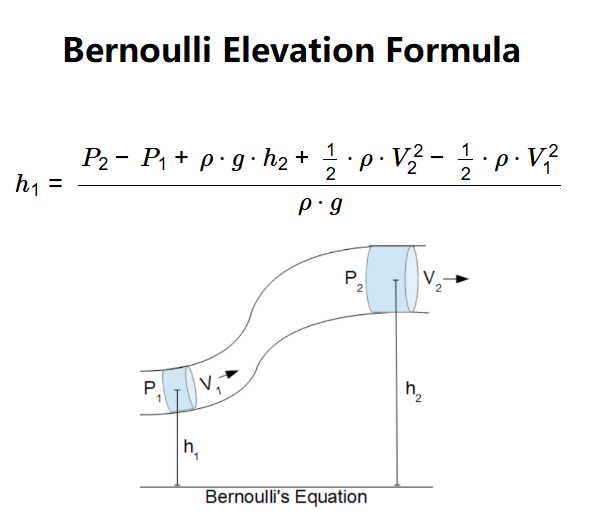 Home
Home
 Back
Back

Definition: This calculator determines the elevation (\( h_1 \)) at point 1 using Bernoulli’s equation, based on velocities (\( V_1 \), \( V_2 \)), pressures (\( P_1 \), \( P_2 \)), elevation (\( h_2 \)), fluid density (\( \rho \)), and acceleration due to gravity (\( g \)).
Purpose: It assists engineers and physicists in analyzing fluid dynamics, particularly in systems involving elevation changes, such as pipelines or channels.
The calculator uses the relationship:
Where:
Explanation: Enter the velocities, pressures, elevation \( h_2 \), fluid density, and gravity in the chosen units, and the calculator computes the elevation \( h_1 \). Results use scientific notation (5 decimal places) if the elevation in meters is greater than 10000 or less than 0.00001, otherwise 2 decimal places. The image does not provide sample inputs or outputs beyond \( \rho = 998.2071 \, \text{kg/m}^3 \), so default values are used for testing.
Details: Bernoulli’s equation is fundamental in fluid dynamics, used to analyze the relationship between pressure, velocity, and elevation in a moving fluid, applicable in engineering fields like hydraulics and aerodynamics.
Tips: Enter positive values for velocities, pressures, elevation, and density, and ensure \( \rho \cdot g \neq 0 \), then click "Calculate." Results show the elevation \( h_1 \) in meters, centimeters, kilometers, yards, feet, and miles (scientific notation with 5 decimal places if > 10000 or < 0.00001 m, otherwise 2 decimal places).